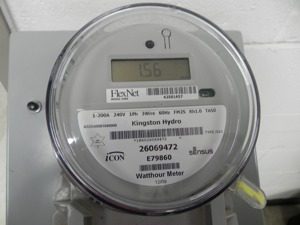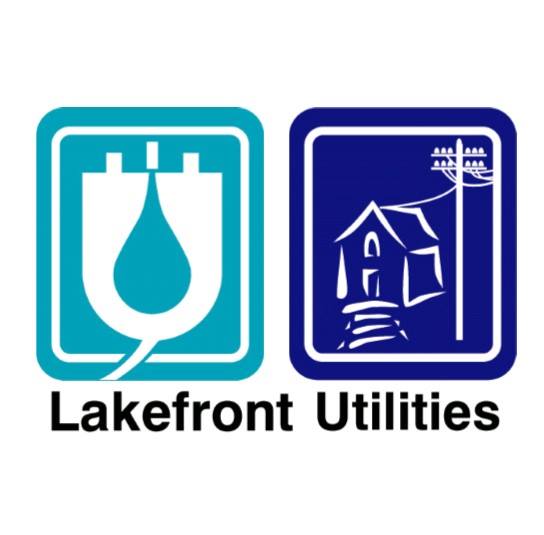SMART METERS
Conserve energy and save money with a Smart Meter
A smart meter records how much electricity was used and when it was used (typically hourly) and communicates this information automatically via wireless and other technologies.
Once your SMART METER is installed and time-of-use (TOU) pricing is in effect, you will see many benefits.
1. You can manage your electricity bills by taking action. Reduce or contain your costs by paying attention to when you use the most electricity.
2. You’ll get detailed information about your electricity use. Each TOU period shows how much electricity was consumed – and, the internet or phone may be able to give you detailed information in the near future.
3. Your SMART METER reads electricity by the hour, and your bill will reflect that using TOU (time-of-use) pricing.
Smart Meter Frequently Asked Questions
Is there a cost to the customer for the Smart Meter?
The cost to provide and maintain electricity distribution infrastructure is recovered from customers through electricity rates that are approved by the Ontario Energy Board. Lakefront Utilities retains part of the delivery portion of the bill to maintain and upgrade local infrastructure (including Smart Meters). There is not a single one-time charge to customers for this cost of the Smart Meter.
Will I see lower electricity bills?
Customers are charged less for using electricity at off-peak times. Register or log in to the Lakefront Utiities Customer Portal to manage costs by learning how to shift electricity use to off-peak periods
Will someone still come to read my meter?
How can I read the Smart Meter?
 The Smart Meter displays your kilowatt hour (kWh) reading on the LCD display, it will cycle through several data points, one of which is kWh.
The Smart Meter displays your kilowatt hour (kWh) reading on the LCD display, it will cycle through several data points, one of which is kWh.
Is my usage information secure and will it remain confidential?
Is it mandatory that I have a Smart Meter installed?
How do Smart Meters work?
How long and often do Smart Meters actively transmit and at what power?
Lakefront Utilities has deployed a Smart Meter system from Sensus. A typical Sensus Smart Meter operates at 1.6 Watts of power, and transmits less than one second per day. The majority of Smart Meters transmit for less than one minute per day.
Are Smart Meters safe?
Significant efforts have been taken to ensure that Smart Meters will not only help households manage their electricity consumption, but that they are also safe and reliable. The Ontario government has established a regulation to outline the minimum standards for the Smart Meter System also referred to as the Advanced Metering Infrastructure (AMI). In this regulation, requirements have been included to ensure safety laws applicable to metering, safety and telecommunications are adhered to. As such, Smart Meters are well within the safety guidelines for exposure to radio frequencies (RF) established by Health Canada in Safety Code 6 (2009).
Smart meters operate at a low power, intermittently, and in the RF portion of the electromagnetic spectrum. The endpoint transmitter in a Lakefront Utilities Smart Meter operates at 901 MHz frequency and transmits at 1.6 Watts of power. A person’s actual RF exposure from the Smart Meter is a function of the signal strength, which diminishes rapidly with distance, and with the amount of daily exposure. Smart Meter exposures even at close range with continuous operation (an unrealistic condition due to power supply and signal processing limitations) yield tiny exposures and are compliant with Health Canada exposure guidelines.
Further, the maximum exposure levels of Health Canada’s Safety Code 6 are in line with international safety practice, e.g., from the Institute of Electrical and Electronic Engineers (IEEE), International Commission on Non-Ionizing Radiation Protection (ICNIRP), United Kingdom’s Health Protection Agency (HPA), and the Federal Communications Commission (FCC) in the United States.
How do Smart Meter RF exposures compare to other household electronic devices?
For most people it is likely that Smart Meter RF exposure will be predominated by other electronic devices in the household that operate with similar frequency and power levels such as cell phones, computers, cordless phones, televisions, and wireless routers. This is as a result of 1) usage patterns; the Smart Meter’s infrequent signal transmission and, 2) typical distance from the meter.
The emissions from a Smart Meter are less intense than the emissions from a microwave oven.
How can I find out more about Health Canada’s RF emission guidelines?
To find out more about Health Canada guidelines, visit the Health Canada web site
To find out more about federal guidelines, visit Spectrum Management and Telecommunications at the Industry Canada web site
How can I find further reference material related to Smart Meters and health impacts?
Sensus
• Sensus Meters – Understanding RF and Smart Meters
Health Canada
• Safety Code 6 (2009)
Institute of Electrical and Electronics Engineers (IEEE)
• IEEE Standard for Safety Levels with Respect to Human Exposure to Radio Frequency Electromagnetic Fields, 3 kHz to 300 GHz (C95.1-2005)
University of Ottawa Wireless Communications and Health
• Frequently Asked Questions
Electric Power Research Institute
LOCATION
207 Division Street
PO Box 577
Cobourg, Ontario
K9A 4L3
Call Us
(905) 372-2193
FAX US
(905) 372-2581
